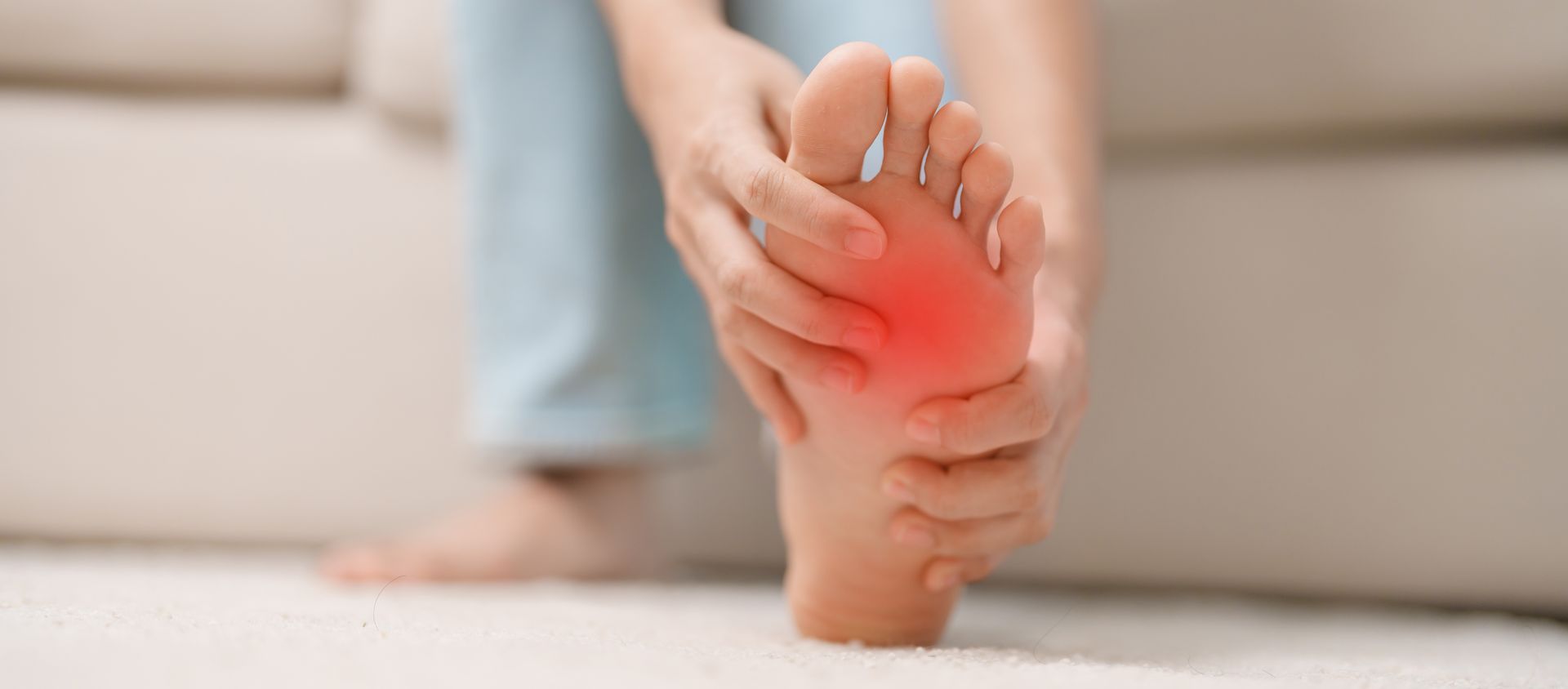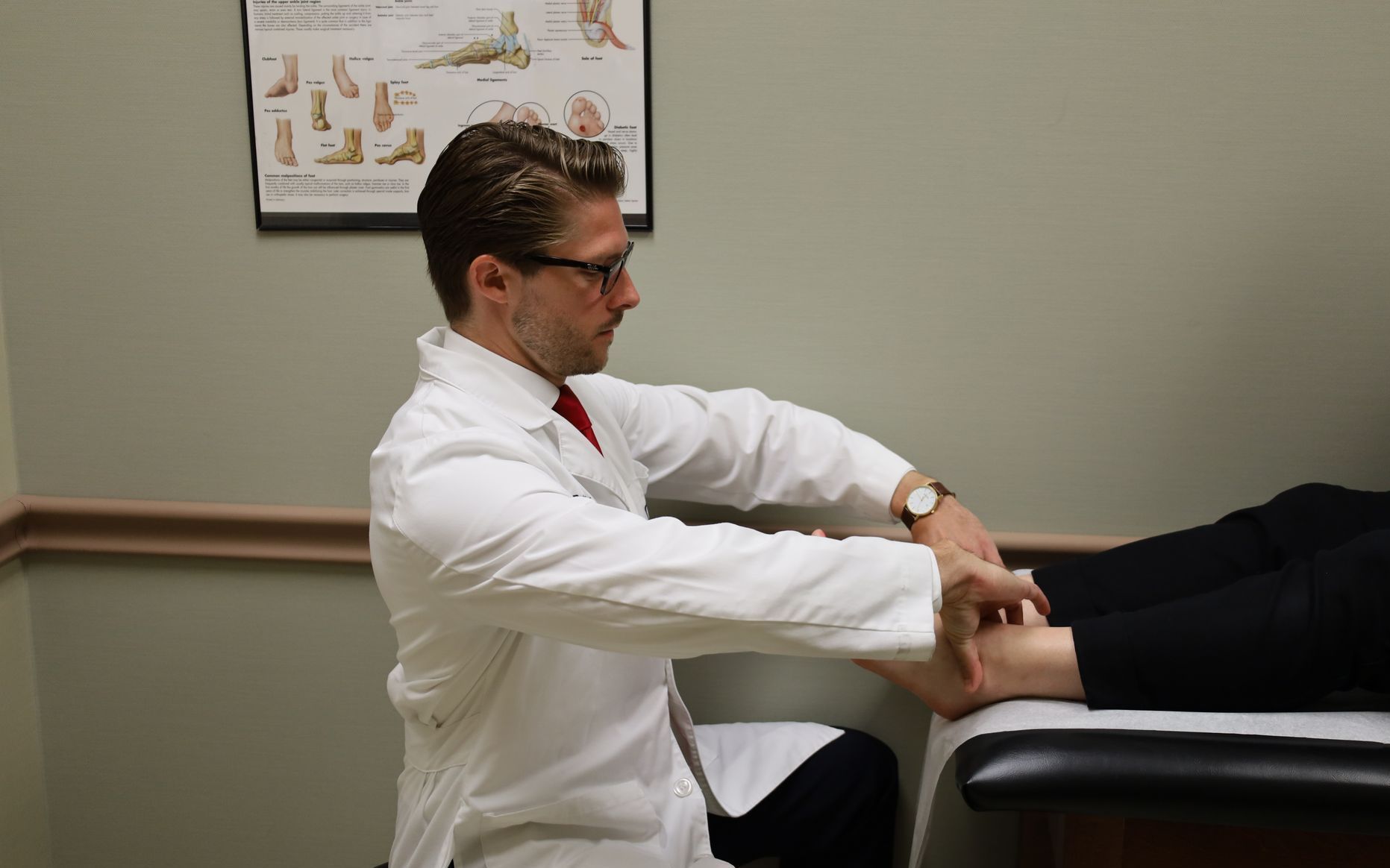Bunion Treatment in Baton Rouge
RELATED PAGES
Bunion Overview
A bunion is a bony lump found at the base of the big toe joint. However, it is not a growth on the bone. Rather, a bunion is the joint itself, protruding and getting larger when the big toe shifts towards the second toe.
Bunion Causes and Risk Factors
Bunions occur when the first metatarsal bone shifts away from its normal position, causing the bones to overlap and create a bump. There are a few underlying causes which may responsible for the shift, as well as some factors that make certain patients more susceptible to bunions than others. These may include:
Symptoms of Bunions
Bunions do not occur overnight. They develop slowly, often over a period of years. While they may begin with no symptoms or side effects, that is likely to change as time goes on and the condition worsens. Common symptoms associated with bunions include:
- A bony, angular bump at the base of the big toe
- A big toe that points inward, toward the other toes
- A big toe joint that is red, swollen and tender
- Sharp or aching pain that may be constant or intermittent
- A burning sensation near the toe joint
- Difficulty moving the toe in cases of arthritis
Candidates for Bunion Surgery
While bunions are quite common, affecting over 3 million Americans, they are fortunately often treatable without surgery. Most patients will find adequate relief with simple shoe changes, ice, and occasional anti-inflammatories. Shoe inserts often prove effective as well. However, when conservative treatment options fail and bunions become so painful that they begin to interfere with daily life and regular activities, surgical correction should be considered. When performed by a skilled and experienced podiatric surgeon, satisfaction rates for bunion removal exceed 90 percent.
Types of Bunion Surgery
When it comes to specific techniques for surgical correction of bunions, there are no shortage of options. In fact, there are over 40 types of surgery prescribed for bunions. Among the most common are the Austin, Lapidus and Keller bunionectomies. While each has its own, unique approach, most bunion surgeries will fall into one of three main categories:
- Osteotomy - Realignment of the big toe joint
- Arthrodesis - Removing and replacing sections of the damaged joint with artificial components (often used in cases of arthritis)
- Exostectomy - Removal of the bump on the joint (typically used in conjunction with other methods such as osteotomy)
In addition to each of these types of surgery, many forms of bunionectomy also include revision of the tendons and ligaments surrounding the joint which can contribute to the condition if they are too loose or too tight.
Recovering from Bunion Surgery
It can take several months for the bones in your foot to fully heal following surgery. In order to prevent complications and delayed healing, it is critical that patients follow their surgeon's care instructions. While recommendations will be based on the needs of the individual patient and the preferences of the physician, most can expect the following:
- Sutures and Dressing - Following the procedure, patients will need to wear a bandage, or dressing, to protect the surgical site and hold the foot in the appropriate position. While sutures may be removed within two weeks of surgery, a brace or bandage may need to be worn for up to 12 weeks.
- Elevation and Ice - Swelling is common post-operatively. Your surgeon may recommend keeping the foot elevated and applying ice throughout the first few days to minimize this.
- Pain Medication - You may receive a prescription for pain relievers following surgery. Take these only as directed. Afterward, over-the-counter pain medications can be used to address any discomfort.
- Limited Weight-Bearing - While some patients are allowed to place weight on the foot immediately following surgery, others may require limited weight-bearing for a period of time.
- Physical Therapy - As part of your recovery, your surgeon may prescribe physical therapy to help restore range-of-motion and strength to the affected foot.
Bunion Specialists in Baton Rouge
RELATED READING
Podiatry Blogs
MOVE MORE, HURT LESS.
QUICK LINKS
SIGN UP FOR OUR NEWSLETTER:
7301 Hennessy Blvd.
Suite 200
Baton Rouge, LA 70808
tel: (225) 766-0050
fax: (225) 766-1499
4463 LA 1 South
Suite A
Brusly, LA 70719
tel: (225) 766-0050
fax:
(225) 766-1499
19065 Dr. John Lambert Dr.
Suite 2100
Hammond, LA 70403
tel: (225) 766-0050
fax: (225) 766-1499
16158 Airline Hwy.
Prairieville, LA 70769
tel: (225) 766-0050
fax: (225) 766-1499
5000 O'Donovan Blvd.
Suite 306
Walker, LA 70785
tel: (225) 766-0050
fax: (225) 766-1499
Bone & Joint Clinic of Baton Rouge, Inc. complies with applicable Federal civil rights laws and does not discriminate on the basis of race, color, national origin, age, disability or sex.
Click to view our notice.
Bone & Joint Clinic of Baton Rouge | All Rights Reserved.






